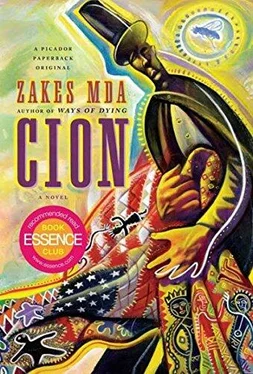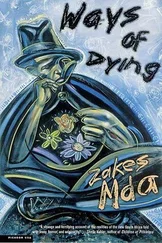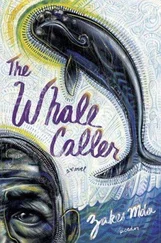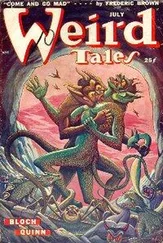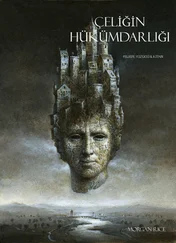The sciolist has delusions of Godness. At his whim I find myself walking among colorful creatures that are hiding in stolen identities. I am wandering on Court Street in Athens, Ohio, trying to find my way among the milling crowds.
Every year at this time, I am told, the natives go wild and invoke their pagan gods who descend upon the earth in the guise of these Court Street creatures. Some take possession of the bodies and souls of decent men and women and turn them into raving lunatics who run up and down the street breathing fire. It is a celebration of blood, as evidenced by many of the creatures who are bleeding. The best of the bloody lot are bandaged all over their bodies like Egyptian mummies and are walking on crutches. Blood oozes through the bandages at strategic places.
It was the bloody ones that I followed to this street from the cemetery at The Ridges where I was abandoned by the sciolist. Perhaps he did not know what to do with me after dragging me halfway around the world.
First he had abandoned me in Durham in the United Kingdom. This, I later learned, had been at the suggestion of one Sam Crowl, a Shakespeare professor at Ohio University. The sciolist had been giving a public lecture to an august audience of scholars when the professor had asked, “Have you ever thought of taking Toloki the Professional Mourner to another culture, say to Durham in the United Kingdom?”
The sciolist had jumped at the idea.
I suppose Durham was mentioned because it was at that cathedral city that the sciolist in his Godly madness had conjured me into existence a decade or so before. It was at the time when he was resident at St. Chad’s College, just across from the cathedral that gloriously looms above all the buildings in the vicinity, where he was commissioned to write a play that would be performed in that imposing Norman cathedral as part of its nine-hundredth anniversary celebration. Instead of focusing on the play his mind had wandered to other matters — hence my conception.
I must admit that I found the idea of mourning in the Durham Cathedral quite attractive when it was first mooted to me. It elevated me to sainthood even before my death. Or at the very least it placed me in the ranks of the monks who had trodden on those grounds for centuries before me. Here was the opportunity to recapture my austere and ascetic ways that I first cultivated years ago after being influenced by the aghori sadhu of India, but that I lost in my travels with the love of my life, Noria, who did her best to reinitiate me into the ways of normal men. Here was a chance to commune with the saints at their own sanctuary.
As a votary of my own Order of Professional Mourners nothing could be as inspiring as walking in the Chapel of the Nine Altars on the eastern side of the cathedral where the tomb of St. Cuthbert — the Wonder-Worker on whose open hands birds used to build their nests — is located. Nothing could be as fulfilling as holding erudite conversations with the Venerable Bede whose bones lie buried in a splendid tomb in the Galilee Chapel on the opposite end of the cathedral.
In any event my professional mourning practice in South Africa was in a rut. Death continued every day, for death will never let you down. But the thrill of mourning was taken away by the sameness of the deaths I had to mourn on a daily basis. Death was plentiful — certainly more than before — but it lacked the drama of the violent deaths that I used to mourn during the upheavals of the political transition in that country. Now the bulk of the deaths were boringly similar. They were deaths of lies. We heard there was the feared AIDS pandemic stalking the homesteads. Yet no one died of it. Or of anything related to it. Instead young men and women in their prime died of diseases that never used to kill anyone before — diseases such as TB and pneumonia that used to be cured with ease not so long ago. At the funerals I mourned, the dreaded four letters were never mentioned, only TB and pneumonia and diarrhea. People died of silence. Of shame. Of denial. And this conspiracy resulted in a stigma that stuck like pubic lice on both the living and the dead.
I continued to attend the funerals, to sit on the mounds and to mourn in my designer wails and groans, but there was no longer any fulfillment. My once revered howls and whines lacked sincerity. I felt contaminated by the lies, for my mere presence even as a paid mourner made me part of the conspiracy.
To break the monotony I decided to take up a new hobby, that of studying headstones and imagining the occupants’ deaths and then mourning them. At least such deaths were as exciting as I could make them. Gradually it became more interesting to mourn the deaths that I had created than to mourn the deaths of lies.
Another factor that influenced my decision to take up Crowl’s challenge was the disillusionment I suffered after discovering I had not invented the art of mourning for remuneration after all. In ancient Rome there were professional mourners. I learned this when people who saw me in action at funerals asked me questions about my trade. Where did it come from? Did I learn it from the ancient Greeks? Or from the Romans? People from other contemporary cultures who got to know of my activities in the cemeteries of South Africa (and later of Lesotho, where I lost Noria, the love of my life — but that is a story for another time) began to tell me about professional mourning in Spain or in Italy or in India or in Ireland or in Zambia. This discovery left me depressed for a long time.
When the sciolist sold me Crowl’s idea I grabbed it with both hands for at least it introduced a new concept in the art of mourning — that of an itinerant mourner. If I could not invent the profession of mourning for remuneration then I could surely invent itinerant mourning. Perhaps in my wanderings I would meet other professional mourners, learn their methods and incorporate them into my mourning routine. That would spice it a bit and would imbue it with a new vigor. Yes, I would travel the world in search of mourning.
A combination of these factors — the lack of interesting deaths in a South Africa that had become a stable society, the hope of creating more exciting deaths from the tombstones of the world and the chance to be an itinerant mourner and to learn new tricks from other mourners — contributed to my allowing the sciolist to drag me all the way to Durham, and when that did not work for him since he could not find a story that would go with my wanderings there, to his dumping me at the famous cemetery at The Ridges in Athens, Ohio.
As soon as I was placed there I set out to choose a headstone at random, to read the information inscribed on it and to mourn in my usual style. Creating the deaths of the occupants of these graves would be especially interesting for they were all inmates of a mental asylum in years gone by. From 1874 until about twenty years or so ago the grand High Victorian Italianate building near the cemetery was the Athens Mental Health Center, its wings housing men on one side and women on the other. Those were the days when women were committed as lunatics for disobeying their husbands or their fathers, or for suffering from what was then called “a change of life”: menopause. Andropause had not yet been discovered, though I doubt if men would have been punished for it. Instead they were admitted for “self-abuse”—otherwise known to us as masturbation. And for melancholia. Even the truly physically sick found their home here: the epileptic, the alcoholic, the tubercular. This also became the place for removing the unwanted people from society: the indigent, the homeless, the lovelorn. They were all signed in never to leave again, except for the clever hobos who sought shelter and food when the situation was bad, and slipped away when they thought good times had returned in the outside world. The rest left only in coffins.
Читать дальше
